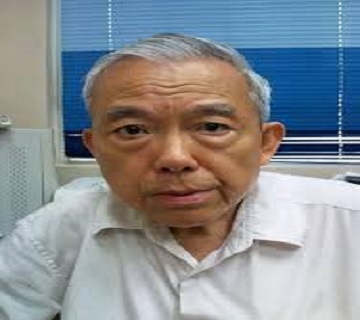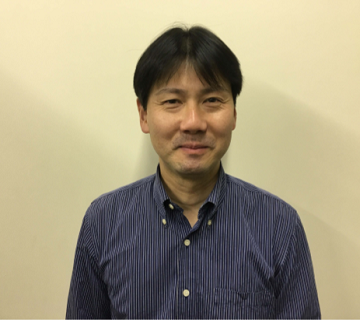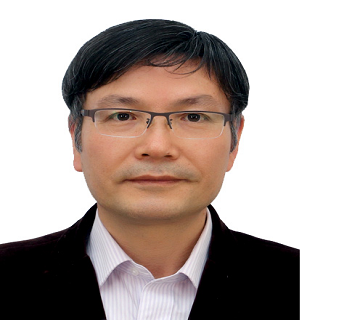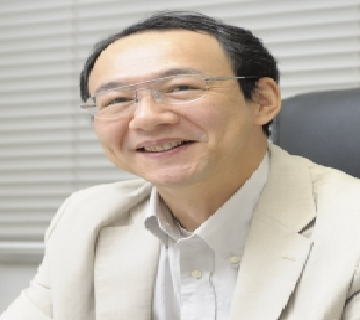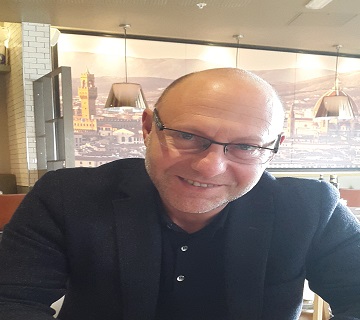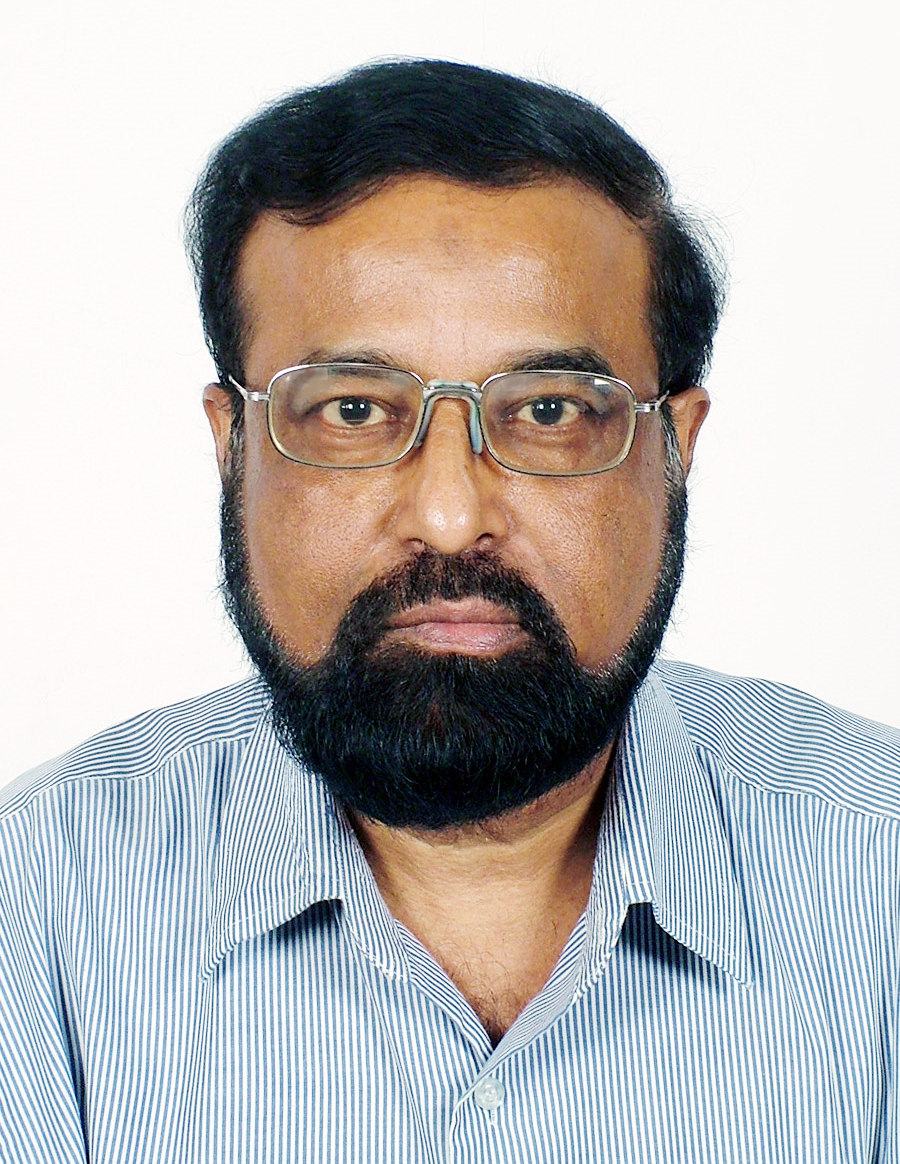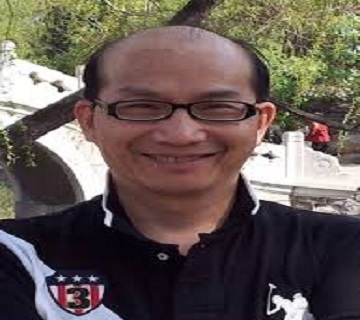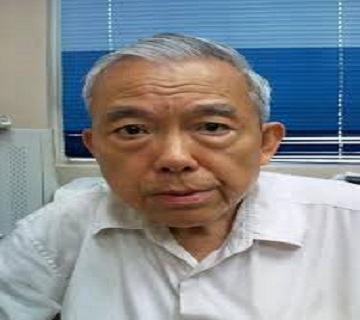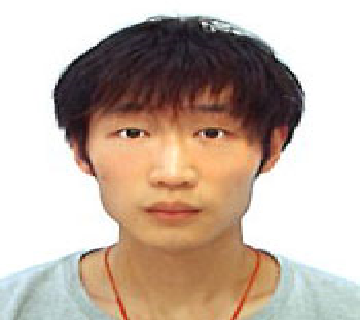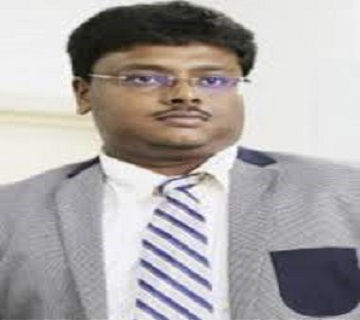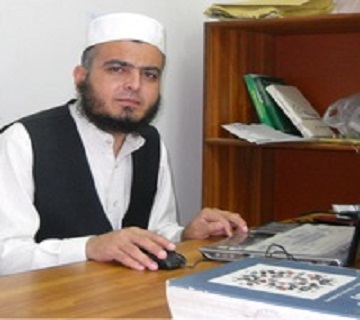Scientific Program
Keynote Session:
Title: A Gauge transformation theory for metamaterials
Biography:
Woon Siong Gan obtained PhD at the age of 24. He obtained BSc in physics in 1965, DIC in acoustics & vibration science in May 1967 and PhD in acoustics in Feb 1969, all from the Imperial College London. His PhD thesis pioneered the statistical mechanics approach to ultrasound propagation in semiconductors. The usual approach is electron-phonon interaction of many body theory. It is also the first to introduce the concept of topological phase transition. The thesis title Transport Theory in Magnetoacoustics pioneered the introduction of transport theory to condensed matter physics. Transport theory is today the key foundation of theoretical design of materials. Hence his thesis also played a role in the founding of the field of condensed matter physics. He also recently discovered the singularity behaviour of transport properties and resonance is singularity. In 2007 he pioneered the introduction of gauge invariance to acoustic field equations. Acoustic metamaterial is an outcome of gauge transformations. He is currently working on the application of gauge invariance to nonlinear acoustics such as multiple scattering, inverse scattering, and interactions. He has published the book Acoustical Imaging:Techniques & Applications by John Wiley & Sons in 2012, the book New Acoustics, based on Metamaterials by Springer in 2018 and several papers on acoustical imaging and gauge invariance in acoustics. He is a Fellow of the Institute of Acoustics, UK, a Fellow of the Engineering & Technology Institute,UK, a Fellow of the Institution of Engineers,Singapore, a Fellow of the Southern African Acoustics Institute, a Senior Member of IEEE, a Senior Member of the American Institute of Ultrasound in Medicine, and a Member of the Acoustical Society of America.
Abstract:
Veselago’s concept of negative permittivity and negative permeability also satisfy the dispersion relation of electromagnetic waves , gives rise to the form of artificial material known as metamaterials. This negativity property gives rise to negative lens able to capture the evanescent waves. However, the dispersion relation is unable to produce the phenomenon of cloaking which has to depend on coordinates transformation producing the bending of path of electromagnetic waves with no change in the form of the electromagnetic field equations. It was shown by Woon Siong Gan that both negative refraction and cloaking can be unified under the theory of coordinates transformation or gauge transformation. In fact negative refraction is a special case of cloaking when the transformation matrix equals -1. Subsequently it was shown that both negative refraction and cloaking can occur also in quantum metamaterial ,an entirely different field from classical metamaterial proposed by Veselago.In quantum metamaterial the dispersion relation does not give rise to negative permittivity and negative permeability.The gauge transformation theory has to be used. There are many similarities between electromagnetic waves and acoustics waves. and so the electromagnetic metamaterial has also been extended to acoustic metamaterial. But sofar there has been no quantum acoustic metamaterial yet. So there is tremendous potential in exploring this new field. For the acoustic metamaterial, the permittivity and permeability of em waves are analogous to the bulk modulus and the mass density of acoustic waves respectively.
Title: Development of monoamide resins for selective recovery of uranium(VI) from nitric acid media
Biography:
Abstract:
Uranium(VI) (UO22+, uranyl ion) is the most stable U species in aqueous nitric acid solutions. Separation of U(VI) from HNO3 containing U(VI) and other metal ions is very important to treat radioactive wastes. Chromatographic separations have an advantage compared with solvent extraction techniques for separation in small and medium scales, because of better separation properties by a multistage processing with compact equipment and easier handling. We have developed novel resins with selectivity to U(VI) in HNO3 media. The functional groups have the structure of monoamides (RR’NCOR”: R, R’, R”; hydrocarbon groups) which have been studied as extractants for actinide (An(IV) and An(VI)) species in HNO3 media. In the present study, resins of synthetic monoamide polymers supported on the surface of porous silica and their adsorptivities to U(VI) to major fission product ions (FPs) will be introduced together with a commercial monoamide resin. We will show that the adsorptivities of the resins to U(VI) and FP ions are dramatically affected by the changes in the chemical structures of the monoamide groups. Mutual separation of An(IV) and An(VI) by the resins and stability against gamma-ray irradiation of the resins will also be presented.
Title: Novel adsorption materials for the recovery of noble metal fission products from spent nuclear fuels
Biography:
Wei YZ has completed his PhD in Metallurgical Engineering at the age of 27 years from Tohoku University, Japan. Currently, he is the Dean of School of Resources, Environment and Materials, Guangxi University, China. He has published more than 240 papers in reputed journals and has been serving as an editorial board member of Journal of Nuclear Science and Technology, Nuclear Science and Techniques, Ion Exchange Letters, etc
Abstract:
Spent nuclear fuel contains significant amount of fission product noble metals such as Pd, Ru, Rh and Tc. They tend to form separate phases as metallic or alloy state during the vitrification process of High level liquid waste (HLLW) generated in the spent nuclear fuel reprocessing (PUREX process) and cause deterioration in the stability of the glasses. On the other hand, these noble metals may be potentially important resources as industrial materials in the future. Therefore, separation of these noble metals from HLLW is of great significance. To selectively recover these noble metals from HLLW, we have developed an advanced ion exchange process by using novel silica-based adsorption materials, which were synthesized by immobilizing functional organic resins in porous silica particles with a mean diameter of 60 μm and pore size of around 50-600nm. This new type of anion exchangers has fast diffusion kinetics, improved chemical stability and low pressure drop in a packed column1,2. Adsorption and separation behaviour of Pd, Ru, Rh and Tc with different oxidation state in nitric acid solution was studied. Small scale separation tests using simulated and actual HLLW solutions were carried out. Pd was successfully separated from a simulated spent fuel solution using AR-01 resin packed column. The adsorption behaviour of Ru and Tc depended on their oxidation states. Rh showed very weak adsorption.
Title: Actinide analysis by ICP-MS/MS and actinide separation
Biography:
Tatsuya Suzuki has received his PhD in nuclear engineering from Tokyo Institute of Technology (Japan) in 1995. He was invited as a full professor at the Department of Nuclear System Safety Engineering of Nagaoka University of Technology in 2012. Currently, he is a professor and deputy head of the Department of Nuclear System Safety Engineering, and chief of Radio Isotope Center at Nagaoka University of Technology, Japan. His research fields also cover the plasma chemistry and the electromagnetic separation. He has published more than 100 papers in reputed journals.
Abstract:
The actinide analysis, determination of actinide nuclides and their abundance, is important in the nuclear field from the viewpoints of the evaluation of nuclear characteristics, the radioactive waste management and decommissioning, the nuclear forensics and safeguard, and so on. We have been studying the actinide analysis by a triple quadrupole ICP-MS/MS and the actinide separation methods which are required for the pretreatment. In the present report, we introduce our studies and the obtained results.
The quantitative actinide analysis by a triple quadrupole ICP-MS/MS, Agilent 8900, has been studied1. The used nuclides were 238U, 237Np, 240Pu, 241Am, and 244Cm, respectively. We confirmed the formation percentages of ionic species of each actinides in several kinds of collision reaction cell modes, no gas, hydrogen gas, helium gas, oxygen gas, and BEC (background equivalent to counts) of each actinide ions are confirmed in each modes. And also, we investigated the formation rates of molecular ions in oxygen gas mode in detail. We found that the formation rates of actinide ion, oxide ion, and dioxide ion depends on the oxygen flow rate and on actinides; the percentage of actinide monoxide ion with higher atomic number is higher, while percentage of the dioxide ion with lower atomic number is higher. From these results, we suggest the feasibility of isobaric discrimination by comparison of yield in some different oxygen gas flow rate.
While the combination of actinide mass analysis and actinide separation is helpful for making more precise and more accurate actinide analyses. The actinide separation has been proposed by the column techniques based on the ion exchange. The tertiary pyridine resin was used for separation. Light actinides, U, Np, Pu, can be easily separated from heavier actinides, trivalent actinides such as Am, Cm in hydrochloric acid solution2. The mutual separation of trivalent separation is also easily achieved in methanol/ nitric acid mixed solution.
Title: On the structure and properties of siliceous materials
Biography:
Abstract:
Silica structure can be described as a system of SiO4 tetrahedra with central silicon atom surrounded by oxygens at each vertex. In crystalline silica oxygens bridge to neighbouring tetrahedra, while in amorphous silica not all oxygens are bridging, with random arrangement of tetrahedra. Non-bridging atoms allow rotation of tetrahedra over 120–180°, resulting in absence of long range order, and localised deformation through bond rotation. Strain is crucial for evaluating and predicting the mechanical response, strength, and fracture. Using experimental pair distribution function (PDF) analysis in combination with Molecular Dynamic (MD) simulations, we highlight the importance of bond angle change vs bond stretching for strain accommodation in amorphous systems. We show that Atomic PDF analysis is a powerful tool which can be combined with MD simulations to provide insight into strain accommodation in amorphous materials. Short range strain accommodation within amorphous silica is dominated by tetrahedral scissoring rather than changes in bond length. The relationships between macro and atomic level strains demonstrate that atomic rearrangement, rather than bond stretching, is the dominating strain accommodation mechanism in siliceous materials up to length scales of approximately 15 Å. We expand the consideration to the broader class of siliceous materials, including crystalline and amorphous forms of silica, blends with other oxides used in dental porcelains, silica gels, and hydrated forms of biogenic silica, used by diatomic algae to build their exoskeletons known as frustules. The wide range of possible applications of siliceous materials is outlined, and possible routes for further development are discussed
Oral Session 1:
- Material Characterization, Material Chemistry and Development, Energy Materials
Title: Effects of Hot-rolling on Microstructure and Electrochemical Discharge Behavior of Mg-6Al Alloy as Anode for Mg-air Battery
Biography:
Abstract:
As-cast and hot rolled Mg-6Al samples were electrochemically tested as anodes of a Mg-air battery in a 3.5 wt.% NaCl electrolyte and further examined using XRD and SEM. Results obtained indicate that hot rolled sample shows a more stable discharge voltage, a higher anode utilization rate, a higher specific discharge capacity and a more uniform corrosion than as-cast sample. Corrosion mechanism is found to be dependant on microstructure: second phase (Al17Mg12) corrosion for as-cast sample and grain boundary corrosion for hot rolled sample. In addition, corrosion products are easier to peel off the surface of hot rolled sample. Based on results shown in this paper, it can be concluded that hot rolled Mg-6Al is more suitable as anode for the Mg-air battery.
Title: A novel pH-responsive material containing residues of glycine and maleic acid as a super adsorbent for the fast removal of dyes and toxic metal ions
Biography:
Ali Shaikh Asrof has completed his PhD from State University of New York at Buffalo and Postdoctoral Studies from Massachusetts Institute, of Technology, USA. He is a Distinguished Professor in the Chemistry Department at King Fahd University of Petroleum & Minerals, Saudi Arabia. He has published more than 220 papers in reputed journals and has been serving as a subject editor in ISI listed Arabian Journal of Science and Engineering.
Abstract:
The alternate cyclopolymerization1,2 of diallylammonioethanoate [(CH2=CHCH2)2NCH2CO2-] and maleic acid in the presence of a cross-linker 1,1,4,4-tetraallylpiperazinium dichloride followed by treatment with NaOH afforded a novel pH-responsive resin (90% yield) (see the Image). The resin has turned out to be a super-adsorbent for methylene blue (MB) removal with a qMax of 2101 mg g-1. The process showed an extraordinarily fast adsorption rate. The presence of the chelating glycine residues was exploited for the removal of Hg(II) ions; the qHg(II) was determined to be 263 mg g-1. The resin also removed MB and Hg(II) simultaneously with remarkable efficacy and was employed to remove pollutants from an industrial wastewater matrix. The resin was exposed to the wastewater after spiking with 0.0 and 10 mg L-1 each of MB and Hg(II) ions. The concentration of toxic metal ions, especially Hg(II) ions, was reduced to sub-ppb level in the non-spiked sample. For the spiked samples, MB and Hg(II) concentrations are also drastically reduced. Its outstanding performance, better than many a recently reported material, paves the way for its potent application in remedying industrial dye-wastewater. The resin was also found to be extremely efficient in the removal of pararosaniline.HCl as well as Cd(II) ions from aqueous systems. The very impressive performance accorded the resin a prestigious place among many sorbents in recent works.
Keynote Session:
Title: Replacing candles with candlelight OLED
Biography:
Jwo-Huei Jou (Joe) received his Master and Ph.D. degrees from the University of Michigan, Ann Arbor, Michigan, in 1985 and 1986, respectively. He worked as a Post-doctoral Visiting Scientist at IBM-Almaden Research Center, San Jose, California, from 1986 to 1988. Now, he is a full professor in the Department of Materials Science and Engineering, NTHU, while chairing the department from 2006 to 2009. He has been granted 85 patents, published 175 journal papers and given more than 50 invited lectures.
Abstract:
Numerous medical studies and International Energy Agency reports highlighted that frequent exposure to improper light, such as intensive white light or light with strong blue emission considerably suppresses the secretion of melatonin (MLT) rapidly if used at night, disturbing human circadian including sleep-wake behavior, cellular function, gene expression and jeopardizing human health. Moreover, circadian disruption by light-at-night, markedly increases the risk of various types cancers, including breast-, colorectal-, and prostate-cancers. The reason beyond this may be a light source with high color-temperature or short wavelength light that has a remarkably high suppression effect on the secretion of the oncostatic hormone, MLT. In the modern world, the low color temperature candles might be used as a physiologically friendly lighting measure at night, nevertheless, they are very energy-inefficient, not to mention their potential fire hazard problems, flickering nature and hazardous particular matter (PM 2.5). In response to the call for a physiologically-friendly light, a candlelight-style organic light emitting diode (OLED) is developed with a color temperature as low as 1900 K and an efficacy of 300 and 3 times higher than that of a candle and an incandescent bulb, respectively. It is 57 times safer from retina protection perspective and 17 times better for melatonin to naturally occur after dusk, as comparing with the blue light-enriched white OLED, LED and CFL counterparts. The designed light source delivers a sensationally warm environment, which is energy-saving, poses no fire hazard, and is free from PM 2.5, flickering, glare, ultraviolet, and infrared emission.
Title: 50th Anniversary of the transport theory in condensed matter physics
Biography:
Woon Siong Gan obtained PhD at the age of 24. He obtained BSc in physics in 1965, DIC in acoustics & vibration science in May 1967 and PhD in acoustics in Feb 1969, all from the Imperial College London. His PhD thesis pioneered the statistical mechanics approach to ultrasound propagation in semiconductors. The usual approach is electron-phonon interaction of many body theory. It is also the first to introduce the concept of topological phase transition. The thesis title Transport Theory in Magnetoacoustics pioneered the introduction of transport theory to condensed matter physics. Transport theory is today the key foundation of theoretical design of materials. Hence his thesis also played a role in the founding of the field of condensed matter physics. He also recently discovered the singularity behaviour of transport properties and resonance is singularity. In 2007 he pioneered the introduction of gauge invariance to acoustic field equations. Acoustic metamaterial is an outcome of gauge transformations. He is currently working on the application of gauge invariance to nonlinear acoustics such as multiple scattering, inverse scattering, and interactions. He has published the book Acoustical Imaging:Techniques & Applications by John Wiley & Sons in 2012, the book New Acoustics, based on Metamaterials by Springer in 2018 and several papers on acoustical imaging and gauge invariance in acoustics. He is a Fellow of the Institute of Acoustics, UK, a Fellow of the Engineering & Technology Institute,UK, a Fellow of the Institution of Engineers,Singapore, a Fellow of the Southern African Acoustics Institute, a Senior Member of IEEE, a Senior Member of the American Institute of Ultrasound in Medicine, and a Member of the Acoustical Society of America.
Abstract:
In 1966, Woon Siong Gan coined/invented the name transport theory in condensed matter physics. Transport theory was previously used only in neutron transport theory for reactors design. Transport theory has come a long way. It is today the key foundation of theoretical design of materials. In 1971, the international journal Transport Theory & Statistical Physics was launched by Taylor & Francis. Transport theory is the theory of transport properties. Transport theories have singularity behaviour at the point of phase transition. Hence transport properties can lead to the invention of new materials. This is known as the transport theory approach to phase transition.This is a new approach proposed by me after the Landau and Ginzburg ‘s phenomenology theory of spontaneous symmetry breaking. to phase transition. Transport theory also played a role in the founding of the field of condensed matter physics. because of its contribution to phase transition. Transport theory can be classified into classical transport theory and quantum transport theory. Transport theory also has an important status in statistical physics, in classical statistical mechanics and quantum statistical mechanics. Due to its various important developments throughout the years, it is meaningful to celebrate its 50th anniversary this year.
Title: Characterizing silicon/platinum-based catalytic motors with near ambient pressure photoemission
Biography:
Jordi Fraxedas obtained his PhD from the University Stuttgart (Germany) and held a postdoctoral position at the European Synchrotron Radiation Facility (Grenoble, France) and a researcher position at the European Laboratory for Particle Physics (Geneva, Switzerland). His research activity is focused on interfacial phenomena and surface science. He has published the books Molecular Organic Materials: From Molecules to Crystalline Solids (Cambridge University Press, 2006), Water at Interfaces: A Molecular Approach (Taylor and Francis CRC, 2014) and Molecular Materials: Preparation, Characterization, and Applications (Taylor and Francis/CRC 2017).
Abstract:
Self-propelled motors that can harvest chemical energy from their surroundings and convert it in mechanical energy are at the forefront of nanotechnology for their foreseen applications in environmental remediation and nanobiomedicine. In this context we have performed near ambient pressure photoemission (NAPP) studies of Pt/Si micromotor surfaces activated by oxygen plasma in water atmosphere at the NAPP endstation of the CIRCE beamline at the ALBA synchrotron near Barcelona. We have shown that the activated Pt films become reduced by the combined effect of the intense soft X-ray photon beam and condensed water. The reduction processes closely follows the inverse mechanisms found in electro-oxidation of platinum. In a first stage, the reduction of the Pt+4 and Pt+2 species with a parallel increase of the signals assigned to adsorbed oxygen and metallic platinum. In a second stage adsorbed oxygen desorbs increasing the metallic character of the surface. We hypothesize that the observed reduction is mainly induced by the reactive species generated through the radiolysis of water.
Title: Biogenic minerals for removal of contaminants
Biography:
Toshihiko Ohnuki was conferred his PhD from Kyoto University and started research carrier at Japan Atomic Energy Research Institute. He moved to Tokyo Institute of Technology in 2016 as Professor. He has published more than 150 papers in reputed journals and has been serving as an Associate Editors-in-Chief of Journal Nuclear Science and Technology.
Abstract:
One of the possible method to eliminate 90Sr released by the Fukushima Daiichi Nuclear Power Plant (FDNPP) accident to environments is coprecipitation of Sr with carbonates minerals. Bacteria ureolysis is known to be able to in-situ eliminate Sr from groundwater by producing carbonates. We have studied the elimination of 90Sr from sea water into biogenic calcite1. A marine microbe of strain TK2d inoculated in the liquid medium contained (per L) 3.74 g Marine broth, 20 g urea, 30 g NaCl with 5.0, 1.0. 0.1, and 0.02 mM SrCl2. Sr2+ concentrations were monitored by ICP-OES (ICP-OES; 720 Agilent Technologies, Inc., USA) during cultivation. The precipitates were analyzed by SEM, TEM, and XAFS. When 1.0 mM Sr was dissolved in the liquid medium, the concentration of Sr decreased up to 0.02 mM within 10 days, indicating that most of Sr in the solution was eliminated within 10 days. SEM and TEM analyses showed that needle shaped precipitates containing Ca and Sr was formed. The elemental mapping showed that Sr was present at the same position of Ca, indicating that Sr was coprecipitated with Ca. The XANES analysis of Sr in the precipitates showed that the XANES spectrum resembled with that of Sr coprecipitated with an abiotic Ca carbonates and differed from that in SrCl2 and SrCO3, indicating that Sr was neither adsorbed on the Ca carbonates, nor precipitated independently as SrCO3, but was coprecipitated with CaCO3. Thus, biological coprecipitation of Sr with Ca carbonates is effective method for the elimination of radioactive Sr from saline solution.
Title: Development of Simultaneous Recovery System of PGMs and Mo from High - level Radioactive Liquid Waste
Biography:
Kenji Takeshita got a doctor of engineering from Tokyo Institute of Technology in 1986. His research fields are Nuclear Fuel Reprocessing, Partitioning and Transmutation of Nuclear Wastes and Nuclear Waste Management. Currently, he is the director (professor) of Laboratory for Advanced Nuclear Energy (LANE), Tokyo Institute of Technology.
Abstract:
We are developing a simultaneous recovery system of Mo and PGMs (Pd, Ru and Rh) from high - level radioactive liquid waste (HLLW) for the decrease in the number of glass bodies and the stable operation of glass melter, as shown in Fig.1. Mo and PGMs were adsorbed simultaneously from HLLW by an inorganic adsorbent, Al ferrocyanide, and separated mutually by solvent extraction process. In this study, the mass balance of Mo and PGMs in the proposed system was evaluated from the results of fundamental adsorption tests and the effect of the introduction of the adsorption system on the vitrified object production was discussed.
Simultaneous adsorption of PGMs and Mo from a simulated HLLW (sHLLW) with 26 elements was tested by Al ferrocyanide. 0.2g Al ferrocyanide was added to 5ml sHLLW in a vial, which was sealed and shaken at room temperature for 24 hr. The adsorption percentages of Mo, Ru, Rh and Pd from the sHLLWwere evaluated to be 75, 20, 40 and 100%, respectively. Co-adsorbed FP elements were Cs (adsorption percent: about 40%) and Zr (about 5%). The adsorption of rare earth elements (REEs) was not observed. Therefore, it is not necessary to consider the adsorption of MAs. These results suggest that Al ferrocyanide has the selective adsorption performance of PGMs and Mo.From these results, The mass balance of Mo and PGMs in the proposed adsorption system was evaluated for HLLW from spent PWR fuel with 45 GWd/T. 86% of Mo and 48% of PGMs can be removed by adding 80kg Al ferrocyanide to 1m3 HLLW. Table 1 shows the relation between the separation of Mo and PGMs from HLLW and the waste loading in vitrified objects under the conditions that the contents of Mo and PGMs in vitrified objects are 1.5wt%., which is limiting contents of Mo and PGMs for the stable operation of glass melter. These results suggest that the waste loading in vitrified objects can be enhanced from 22wt% to 35wt% by the introduction of the simultaneous adsorption system of PGMs and Mo.
Oral Session 1:
- Material Chemistry and Development, Material Characterization, Energy Materials
Title: Mutual separation of trivalent lanthanides in nitric acid solution by a novel hydrophobic ionic liquid including N,N,N’,N’-tetrakis(2-pyridylmethyl)-1,3-diaminopropane-2-amido structure: A soft N and hard O donor combined strategy
Biography:
Wu H will complete his doctoral course in September, 2019, in the department of nuclear engineering from Tokyo Institute of Technology, Japan. Currently, his research work mainly focuses on the mutual separation of rare earth metals by using ionic liquids, and this research is financed by Japan Society for the Promotion of Science (JSPS-DC2). He has published several papers in reputed journals such as Dalton Trans., Chem Lett. etc.
Abstract:
A novel hydrophobic ionic liquid including N,N,N’,N’-tetrakis(2-pyridylmethyl)-1,3-diaminopropane-2-amido structure ((IL-TPEN)+NTf2-) was successfully synthesized. Its extraction performance of Eu3+ from nitric acid solution was investigated by dissolving in a low viscosity ionic liquid (C6mim)+NTf2-. As a result, it was found that extraction kinetic was fairly fast and can reach equilibrium within 1 h. The extraction percentage of Eu3+ varied with the pH value. The stripping of extracted metals from (C6mim)+NTf2- into a receiving phase was successfully achieved under 1.0 M nitric acid condition without adding any other metal complex forming agents. Slope analysis confirmed that (IL-TPEN)+NTf2- formed 1:3 complex with Eu3+ in (C6mim)+NTf2- system. On the other hand, (IL-TPEN)+NTf2- showed better preference to heavier lanthanides than lighter ones, and the maximum SFLu/La= 33.1. Furthermore, the coordination environment between Eu3+ and (IL-TPEN)+NTf2- was also studied by means of FT-IR, 1H-NMR, EXAFS etc. The results indicated both soft N donor (pyridine group) and hard O donor (amido group) participated in the formation of Eu3+ complex. Therefore, the soft-hard donor combined (IL-TPEN)+NTf2- can be feasibly utilized in the mutual separation of lanthanides.
Title: Liquid crystals nanoscience in golden oppurtinities for novel switching
Biography:
Kaushik Pal was born in India. He received his Ph.D. from University of Kalyani, Nadia, (India). Most significant prestigious awards “Marie-Curie Experienced Researcher (Postdoctoral Fellowship)” offered by the European Commission at Aristotle University of Thessaloniki, Greece and “Brain Korea National Research Foundation Visiting Scientist Fellowship” at CNU, South Korea, achieved in his career. He was appointed “Senior Postdoctoral Fellow” at Wuhan University in China and after he obtained the most prestigious position “Scientist & Faculty CAS Fellow” by Chinese Academy of Science. Most recent, he has been working as a “Research Professor & (Independent Scientist)”, at the Department of Nanotechnology, Bharath University (BIHER) at Chennai. Based on his research background he selected “Editor-in-Chief” of the International peer reviewed journals and publishers ‘Pan-Standford’, En Press, and ‘InTech’ as well as edited significant numbers of the book chapters, partially reviewed 85-research articles. Prof. Pal is an excellent group leader as well as associate member in various scientific communities, reorganizations and professional bodies. Since last year organized and chairperson around 12-National/ International events/ symposiums/ conferences/workshops and himself contributed around 8-Keynote & 25-Invited lectures and attained distinguish chief guest in worldwide Nanoscience research community.
Abstract:
Liquid crystal (LC) has long been a feature in Materials Science and Nanotechnology, have recently been extended into the appealing domain of complex hybrid materials. The crystalline structural effects of alkoxy chain lengths and the mesogen properties of hydrogen-bonded (nOBASA) complexes (n=5,6,7) have been investigated in recent studies. The LC-based hybrid nanocomposite materials –obtained by the homogeneous dispersion of zinc oxide nanowires (ZnO NWs) as a dopant into hydrogen-bonded liquid-crystalline (HBLC) compounds– seem to be particularly promising in this article. Optimizing the geometry of surface stabilizing electrooptic, LC cell reveals the typical intermolecular hydrogen bond (H-bond) formation. Here, we explore molecular-colloidal hybrid composite matrix formed from LCs and dilute dispersions of orientation-ordered ZnO NWs, for eventual potential application in smart switchable display devices. In addition, we investigated the structural, dielectric and optical properties of the nanocomposite, and electro-optical studies which were performed by exploiting the potential during the conditions before the opening of spectrum acquisition. Our novel findings confirm that the electric field induces a charge transfer of the LC molecules to the nanomaterial, which acts as a trap for ionic charges. This effect may be utilized to achieve switching that is electro optically tunable. Such dynamic switching could be harnessed in smart LCD technology and pave the way towards innovative display modulation technology.
Title: Synthesis and characterization of Ag-Fe3O4 nanoparticles and evaluation of their photo catalytic activity
Biography:
Muhammad Saeed has completed his PhD in 2011 from National Center of Excellence in Physical Chemistry, University of Peshawar Pakistan. Presently he is working as Assistant Professor at Department of Chemistry, Government College University Faisalabad Pakistan since 2013. He has published 40 papers in reputed journals and has been serving as an editorial board member of repute.
Abstract:
Fe3O4 known as magnetite is one of the oxides of iron which plays a major role in various fields of sciences. Fe3O4 was synthesized precipitation method using FeCl3⸳6H2O, FeCl2⸳4H2O and NH3⸳H2O as precursor materials. The synthesized Fe3O4 nanoparticles were used as photo catalyst for aqueous phase photo degradation of methylene blue. The photo catalytic activity of Fe3O4 was remarkably enhanced by doping of Fe3O4 with Ag nanoparticles. Ag nanoparticles were immobilized on Fe3O4 by green method using leaves extract of Calotropis gigantea plant. The synthesized nanoparticles were characterized by advanced techniques, XRD, EDX, TGA and SEM. The synthesized Ag-Fe3O4 were successfully tested as photo catalyst for aqueous phase degradation of methylene blue dye under visible irradiation. The degradation of 0.0188 M (50 mL) methylene blue dye solution obtained after treatment of dye with Fe3O4 and Ag-Fe3O4 for 120 minutes was 41 and 73% respectively. The degradation kinetics in present study was described by Eley–Rideal mechanism.

